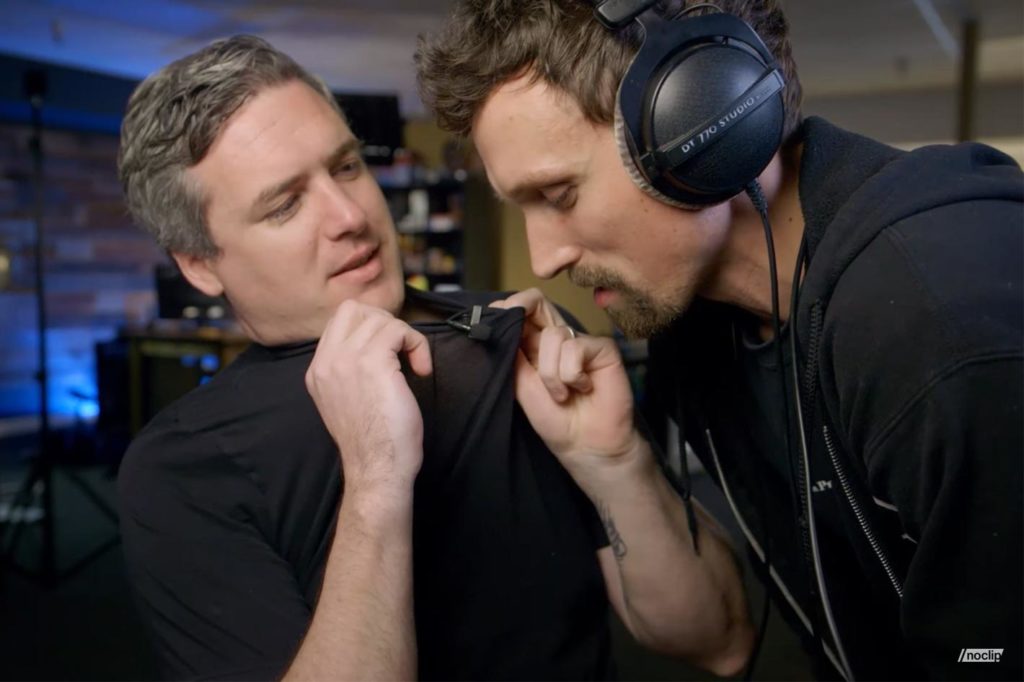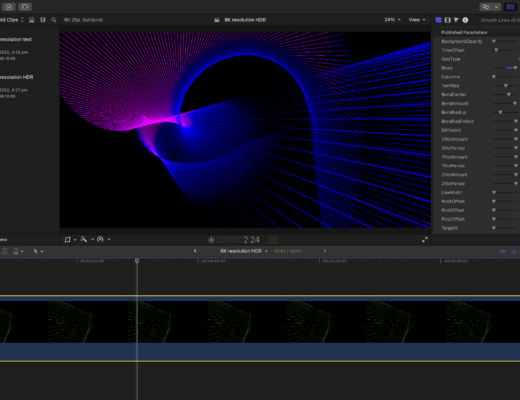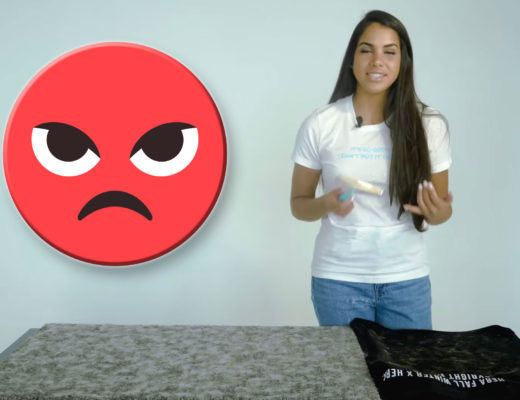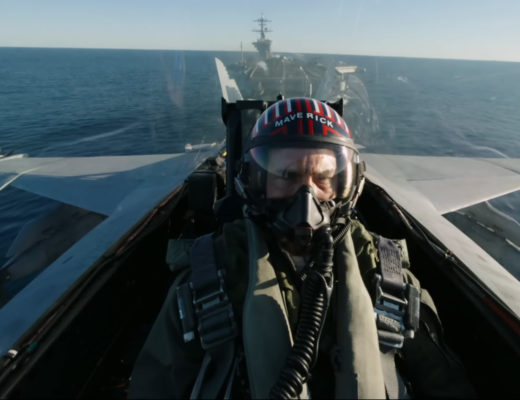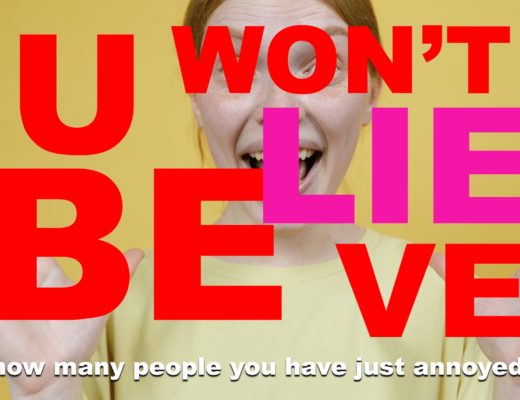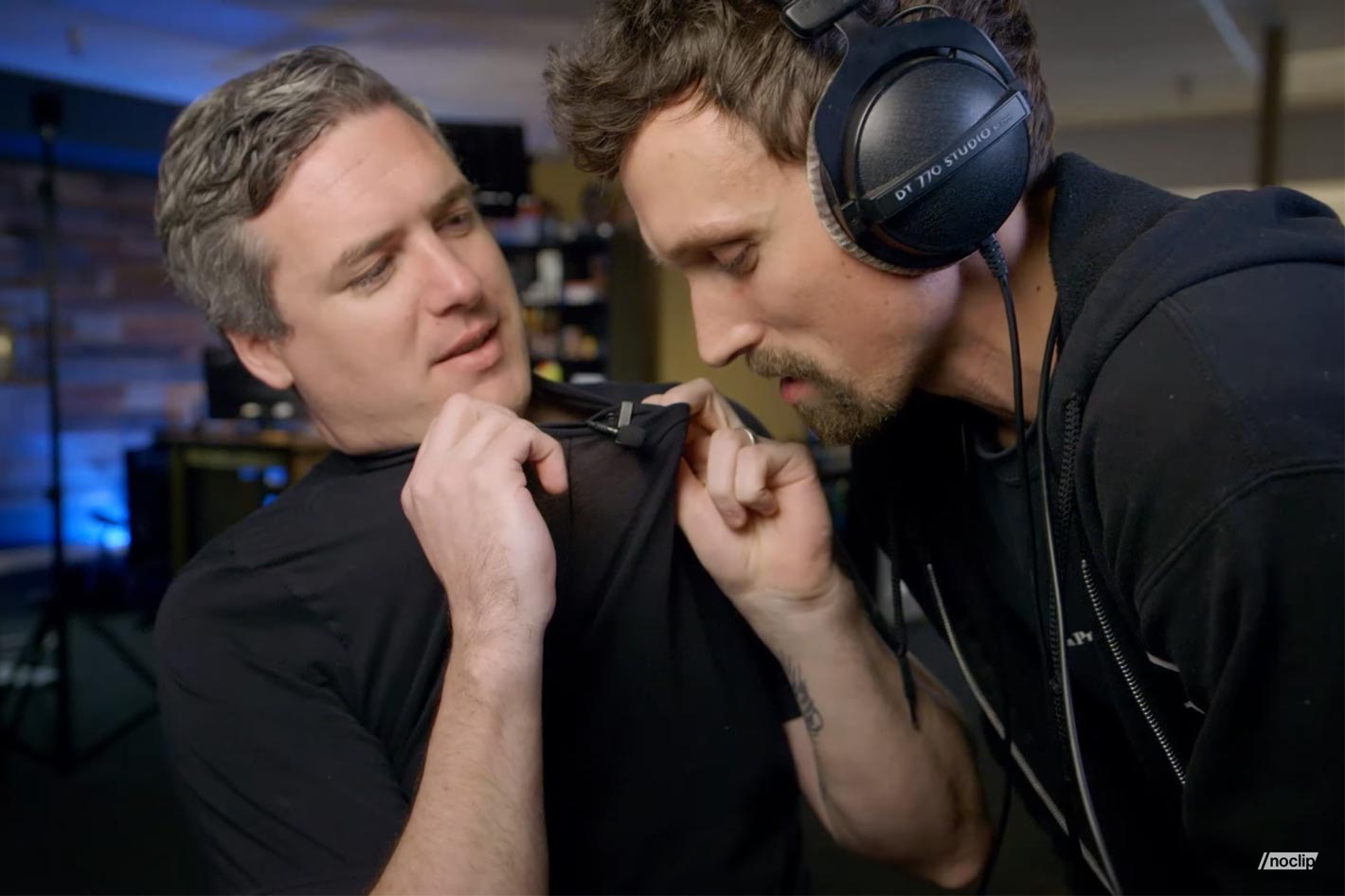 Noclip is more than just another YouTube channel. It’s a video producer with a core team of two, making documentaries about video games that are FREE to watch on YouTube and 100% crowdfunded.
Noclip is more than just another YouTube channel. It’s a video producer with a core team of two, making documentaries about video games that are FREE to watch on YouTube and 100% crowdfunded.
The name Noclip was completely new to me when I saw a documentary about the production of a video game – or maybe I should say flying simulation –, Microsoft’s recent Flight Simulator, which signals the return of the company to an adventure and title the company first released in 1982 – yes, 39 years ago – and them left orphan in 2009. The video is different from any other thing I have seen before because it is not just telling facts about a video game, as so many others do, it has soul, and you can feel it.
The return of Microsoft Flight Simulator is special – the new version was first introduced in August 2020 -, because of the technology featured, which uses Microsoft’s Bing maps to feed the world images into the sim and adds a series of technology layers that make the simulation “as real as it gets”. As one of the beta testers of the flight simulation in its early phase, the news that someone had created a documentary about Microsoft Flight Simulator that goes beyond the usual video reviews of the app interested me, and that’s how I discovered Noclip.
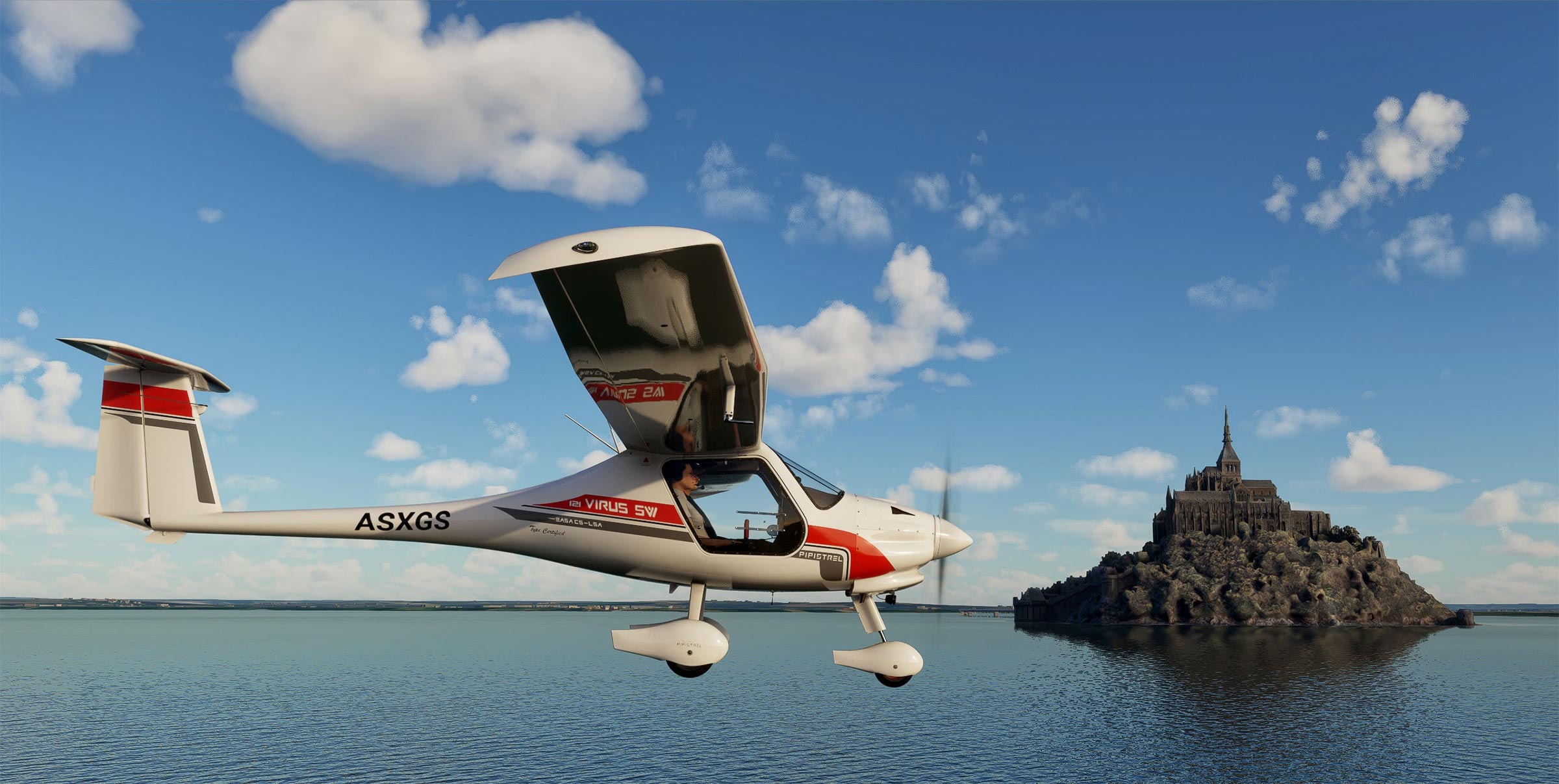 Microsoft Flight Simulation as the starting point
Microsoft Flight Simulation as the starting point
Having written professionally about video games and the industry from mid-80s until early 2000’s, I still keep tabs with some aspects of the industry, as film and video games have a common language that technology has made even stronger. The idea of offering video game audiences new perspectives always attracted me and was the base for the magazine projects and newspaper columns I was involved with during that period. It still is the perspective I use on my blog posts about flight simulation, which is an area I still write about, when I feel like sharing some points of view.
The documentary about Microsoft Flight Simulation was a starting point to discover the series of documentaries created by Noclip, which covers now a few years offering refreshing perspectives over the universe of videogames and the heroes behind the industry. I sincerely liked what I saw, so I decided it made sense to get in touch with the people at Noclip and ask how the whole project was born and has evolved and what the future may bring.
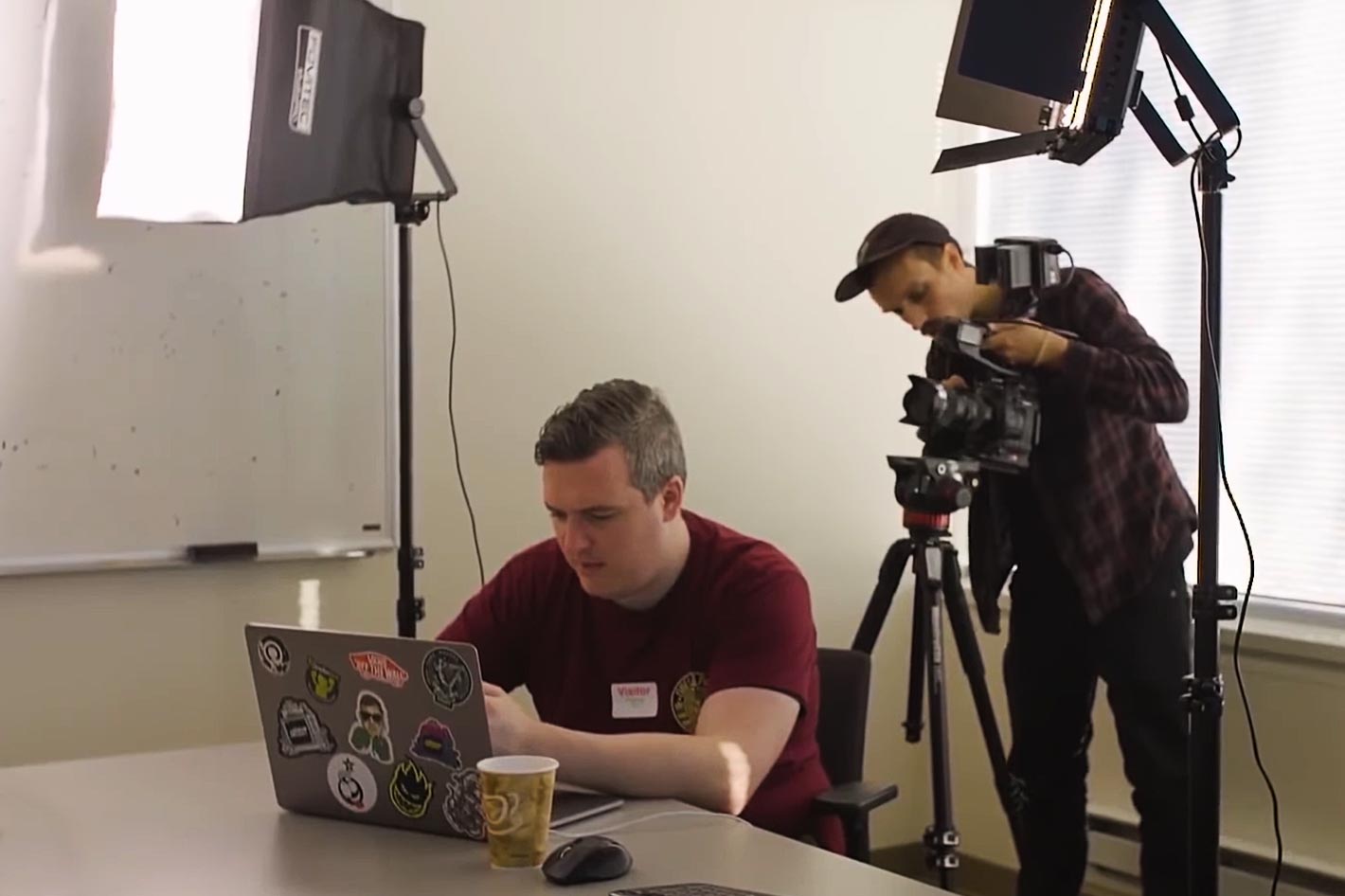 Noclip: what’s behind a name
Noclip: what’s behind a name
As any other team having to create interviews with people to create their documentaries, Noclip – Video Game Documentaries – its full name – has had to rethink its strategy because of the pandemic, so that’s part of the story that Danny O’Dwyer, one-half of Noclip, told me. How it all became viable, and how it works – and what doesn’t work – are all part of our exchange, through email. I made the questions and Danny found the time to answer them. The whole Noclip story is here for you to read. I hope it makes you want to find more about the work they are creating – two examples shown here – and, who knows, help the project move on. So, without further ado, here is my interview with Noclip.
ProVideo Coalition: What is Noclip and who are the core people behind the project?
Danny O’Dwyer: Noclip is a YouTube channel where we produce documentaries about how video games are designed. We fly to studios around the world, interview creators about the work that goes into making games and then edit them in a fashion that regular gamers can understand and appreciate. The entire concept was to remove the mystery of game design, and to build an appreciation for the process that will hopefully lead to more empathy between gamers and designers. Or if nothing else provide fans of a game more context for the game they enjoyed.
We’re a super small team, it’s basically myself and my creative partner Jeremy Jayne with him doing the bulk of the filming/coloring and myself doing the bulk of producing/editing. The name Noclip refers to a classic video game cheat code that would let players move anywhere in a game world they wanted – flying through walls and viewing the game from new angles. We think of ourselves as flying into game studios in a way that nobody really has before.
ProVideo Coalition: You left your job at GameSpot to launch Noclip in 2016. Why did you decide that it was time to try it out on your own?
Danny O’Dwyer: Patreon. The crowdfunding platform was still in its infancy but some industry friends had successfully left their jobs at our main competitor IGN and founded their own games coverage outled they coined “Kinda Funny”. I wanted to make documentaries about game design that I had creative control over so doing corporate work with studios on the side didn’t seem like an ethical way to fund a journalism project. But once I saw that you could get a few thousand bucks a month from folks, that was enough to form a business plan. We ended up blowing past our highest expectations within the first 24 hours. I guess there was a thirst for this type of content.
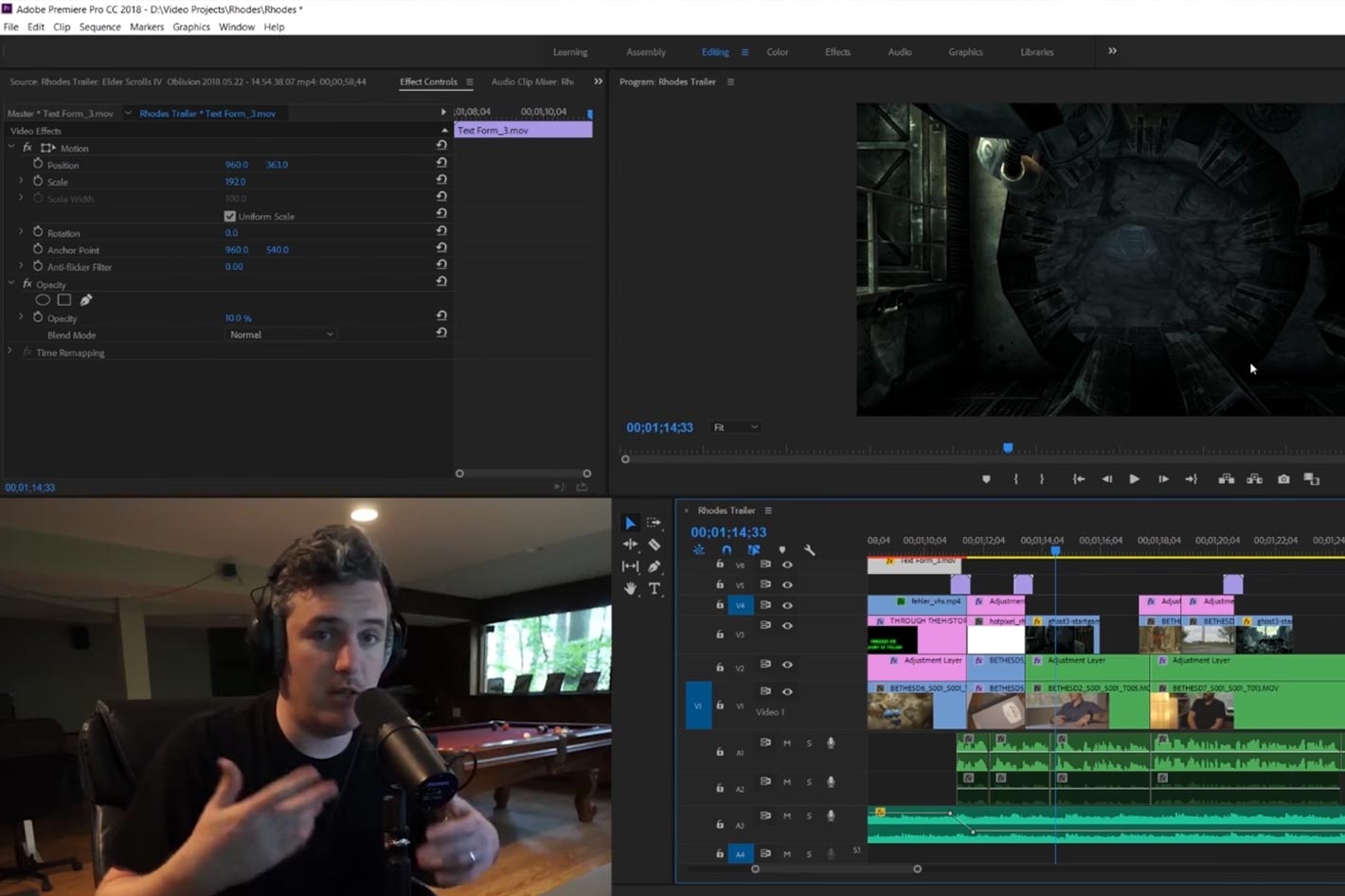 Interviews over zoom forced us to be more creative
Interviews over zoom forced us to be more creative
ProVideo Coalition: Noclip has now been around for five years. Do you feel you have achieved your initial goals? What’s the path forward for Noclip?
Danny O’Dwyer: Yea we’ve been very fortunate that studios opened their doors to us. We covered as broad a range of projects as possible – from large studios to lesser-known independent creators. We’ve flown to Japan, Europe and covered a lot of North America. I’m happy with the diverse range of stories we’ve captured. Of course I go back and watch old stuff and just see what I’d like to fix, but given the size of our team I think we’ve done well. We’ve had a fairly consistent patronage throughout the 4+ years too which is as big a vote of confidence as you can get really.
Covid has obviously made visiting studios all but impossible for most of last year, and we had to close our studio here in Oakland too – but honestly, I think doing interviews over zoom and discord has forced us to be a bit more creative in our edits. Our plans for 2021 are to find new and novel ways to tell our stories given the reality of remote filming, and to film more stuff locally. So less shooting interviews, and more work on interesting b-roll, pack shots and stand-ups. We recently had a remote interview with a game design luminary which had terrible audio and video, so we pushed the signal through to an old Sony portable TV and filmed that instead. For our flight sim doc we filmed close to the airport, just to ground it in some way. Simple things that give the videos a bit of the texture we lose from being on-site with our interviewees.
ProVideo Coalition: You’re not dependent on YouTube monetization because you’re using Patreon to keep the whole project alive. How hard was it to reach a point where you could imagine a future for Noclip? Are there any fluctuations in the number of patrons? How do you keep patrons interested? With so much “noise” online how do you manage to get noticed?
Danny O’Dwyer: Yea patrons are generally very loyal. I’d say 80% of them see it as a tip jar, or even a form of activism. So our patronage hasn’t fluctuated more than 5% up or down in 4 years. Honestly if we spent more time promoting it we could probably get more funding, but whenever we need a little bit more we just ask our patrons, and they chip in a bit more that week. There’s a churn of about 150-200 patrons in/out a month as folks re-budget or realize they don’t watch us anymore (Patreon provides exit surveys which can be brutal).
As for getting noticed, I was lucky that I had a fairly healthy online presence through my work at GameSpot and Giant Bomb (another gaming website). Unfortunately Patreon is generally good for people with established audiences, rather than good art. For instance, one of my favorite channels game documentary channels, Archipel create incredible work out of Japan but have fewer patrons than we enjoy because they started off unknown. That’s a more difficult path to walk for sure.
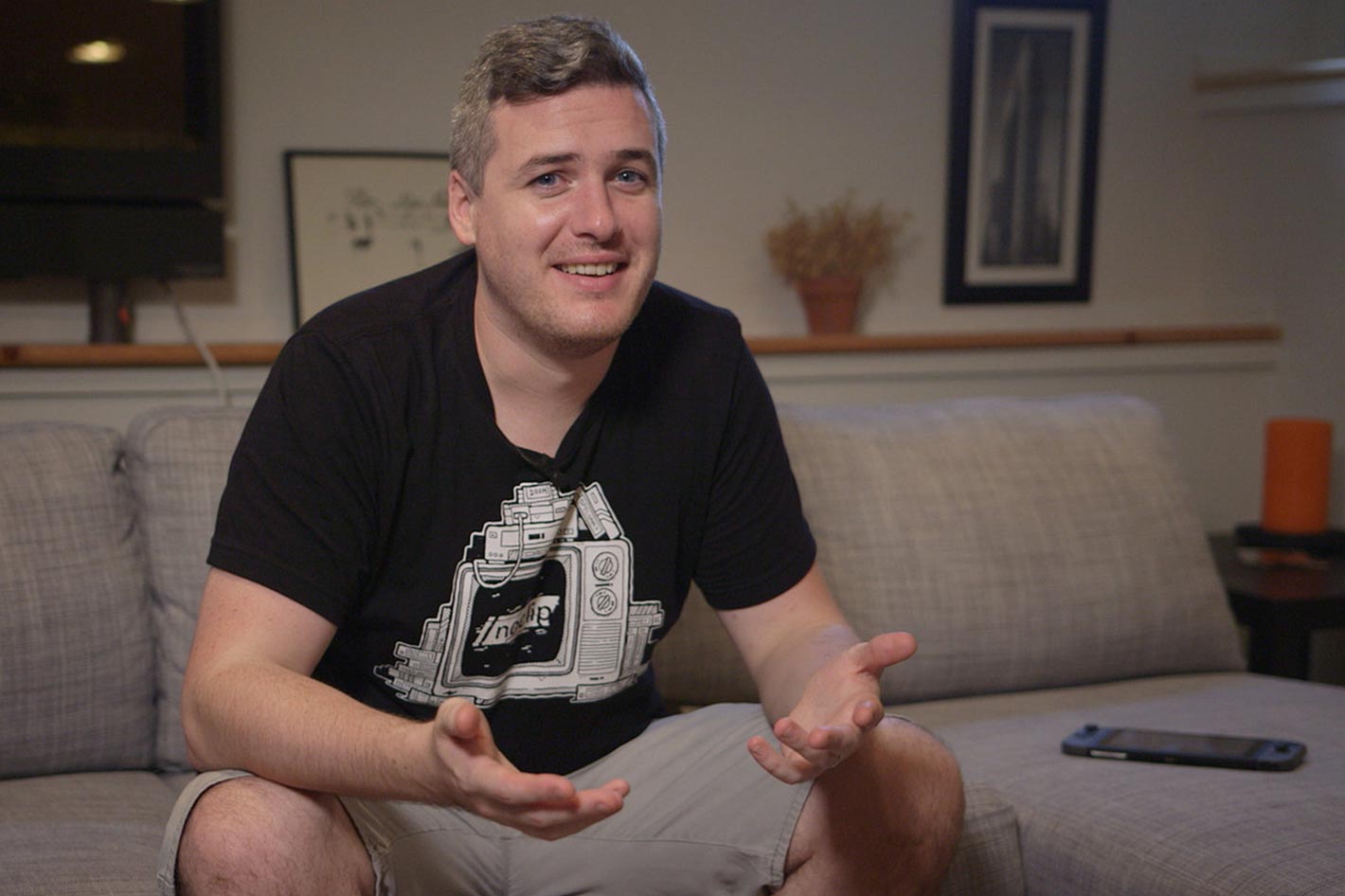 Getting emotional about games
Getting emotional about games
ProVideo Coalition: Your recent documentary is about Microsoft Flight Simulator and people has discovered that it is more than a documentary about a flight simulator; it’s a voyage of discovery about a title which invites people to explore and travel, released while most of the world is grounded. It’s a lot about – fantastic – tech but there are moments in the documentary, as your introduction and the segment “Where People Fly” that really set the tone about the way Noclip documentaries are created. It’s a touching moment… Do you always get so much involved with the subject of your docs?
Danny O’Dwyer: The thing about games is that they are these very technical devices – and much of the creative process for them is brutally technical. But the net result of all that work is the player feeling an emotion, so we always try to inject some humanity into the docs if we can. I’m no filmmaker but I recognize that documentary filmmaking is most often about humanity. Regardless of the topic we are drawn to the human experience of that topic. The people who make games often go years without being able to talk to anyone about what they’re working on. They work on games that have a project lifecycle of years not months.
It’s very easy to get to the emotional core of a design process when you turn up at the end of that process with a camera. Sometimes it’s like therapy and there have been plenty of moments where there are tears on both sides of the lens. So it’s hard for me not to get involved in the subject. When we leave a shoot it feels like we’ve been gifted the experience of hearing our interviewees’ truths, and it’s our responsibility to make sure the audience feels what we felt in the room. Or, as it happens, the zoom call.
ProVideo Coalition: The Microsoft Flight Simulator is a 35-minute piece freely available on YouTube, as all your other documentaries, but for Patreon supporters you’ve launched a new exclusive series, Noclip Edit Club. The first episode is about the edit and production of a recent video, a 76-minute look at your Microsoft Flight Simulator documentary. Is this behind-the scenes series going to be a regular?
Danny O’Dwyer: Yea we have a bunch of editors and filmmakers in our community and we’re pretty open about talking about our process. I mean, our 9-5 is demystifying in the work of developers so it’s probably natural for us to turn the lens on our own work too. We try and keep all the documentary work as open and free as possible, but the Edit Club episodes are a month-long patron-exclusive bonus that I’ve been enjoying. We’re not the most professional outfit in the world by any stretch, but hopefully folks can get some pointers and guidance from the series.
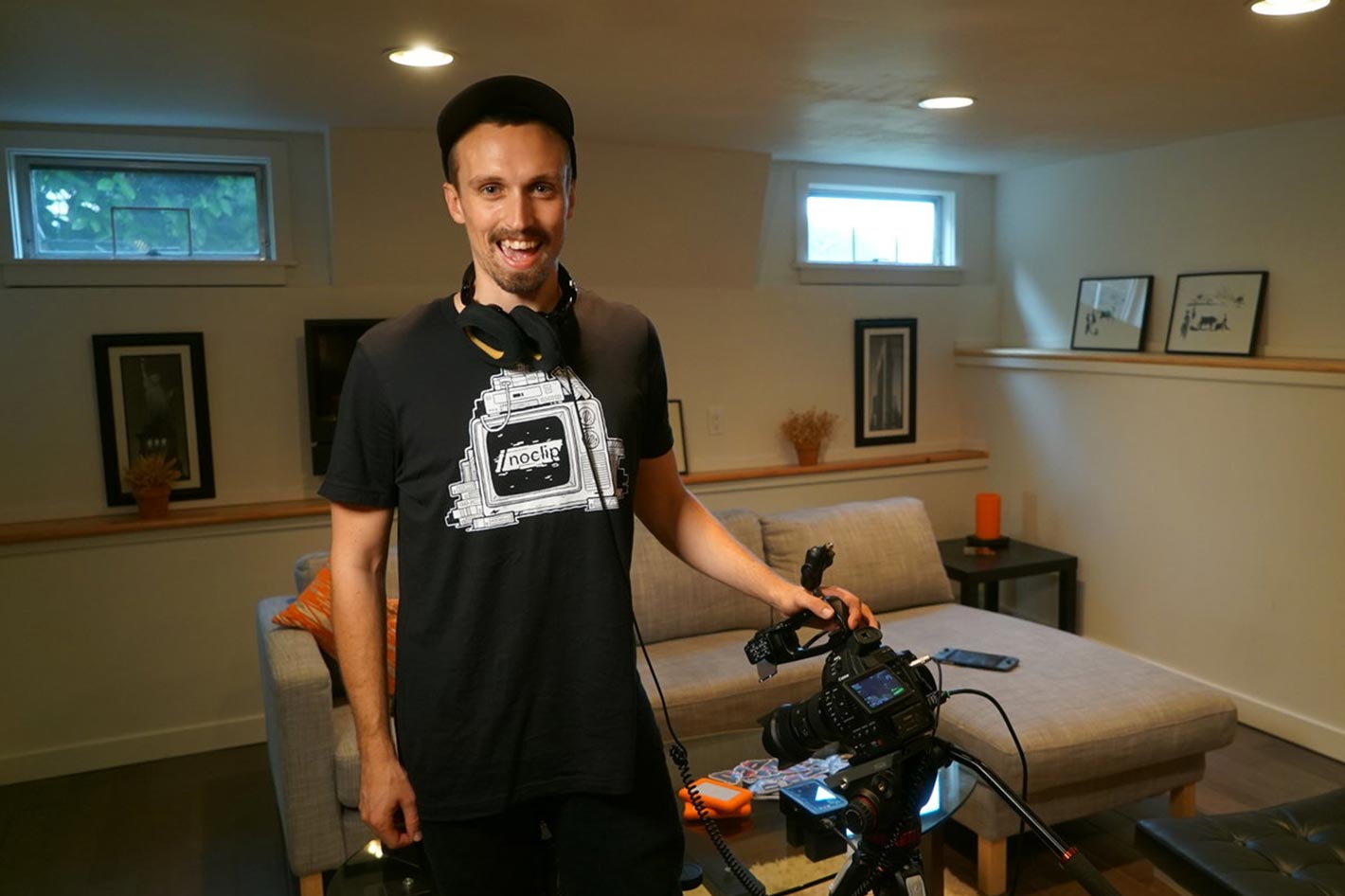 Understand what a Noclip Documentary is
Understand what a Noclip Documentary is
ProVideo Coalition: You’ve produced a series of documentaries about a whole variety of games, from AAA giants to less known titles, but you’ve always tried to make them different from the usual videos we see about gaming. You’ve also noted, in an interview, that you never talk to marketing people, your goal is to interview the creators. How hard is it to prepare all the different aspects of each documentary, and to get people to open to what is a different, more intimate approach to the universe of game creation?
Danny O’Dwyer: It really depends on the people involved. There are some projects which never get past the email stage because we can sense the control or fear. We are very upfront about our process, how we work with PR and that we have full control over the final cut. I think it’s a lot easier now that we are established and many of our subjects understand what a “Noclip Documentary” is. We also have a great community who are very supportive and engaging with our subjects so that helps. I think generally people are either down to talk to us, or they’re not. Sometimes we need to do some massaging if it’s a story we really want, and we’ve had some instances where 11th hour meetings have been needed to resolve creative differences, but generally we are very transparent with everyone, and respectful of our subjects intentions. We tell our truth, but we never over dramatize.
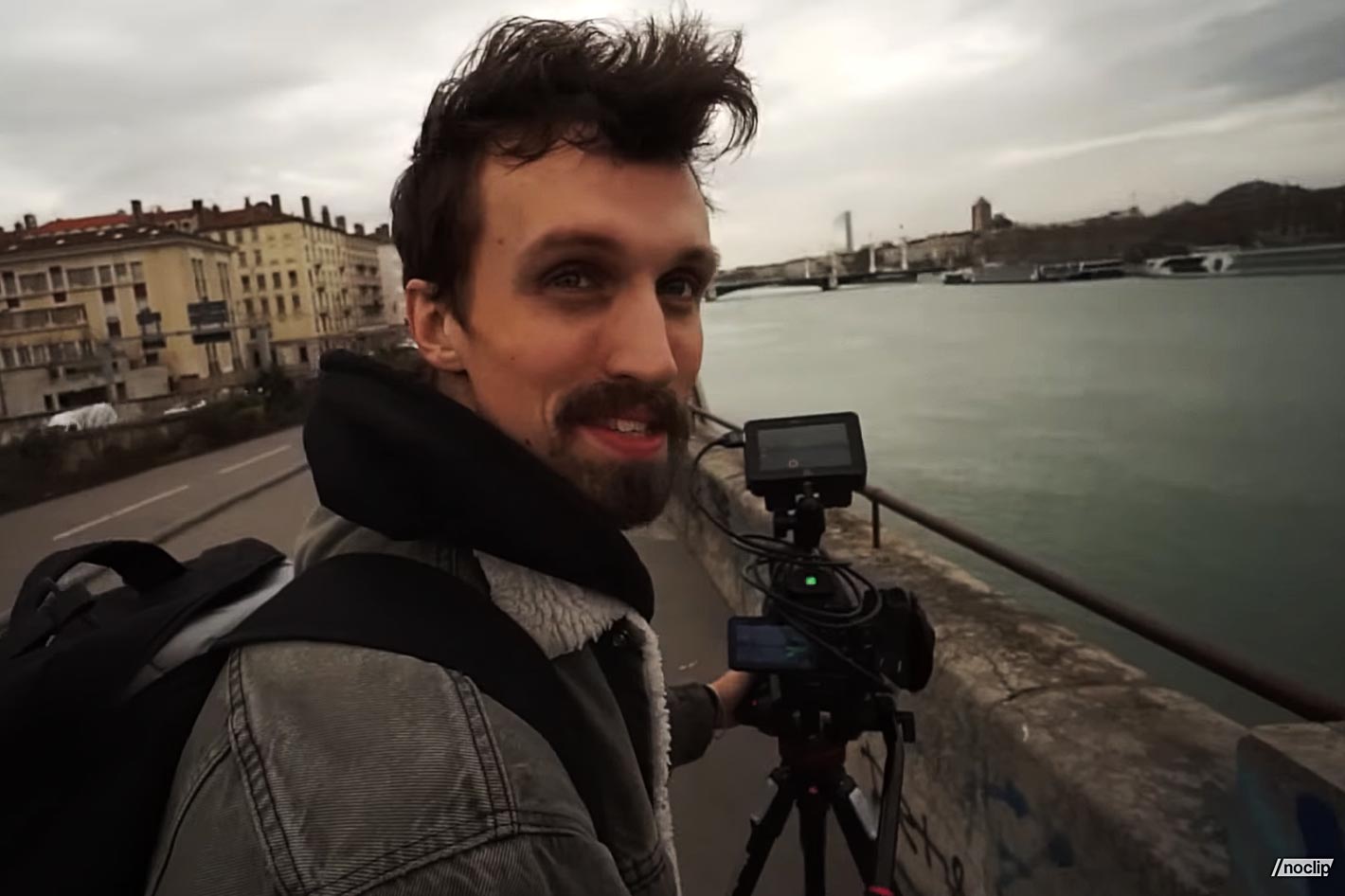
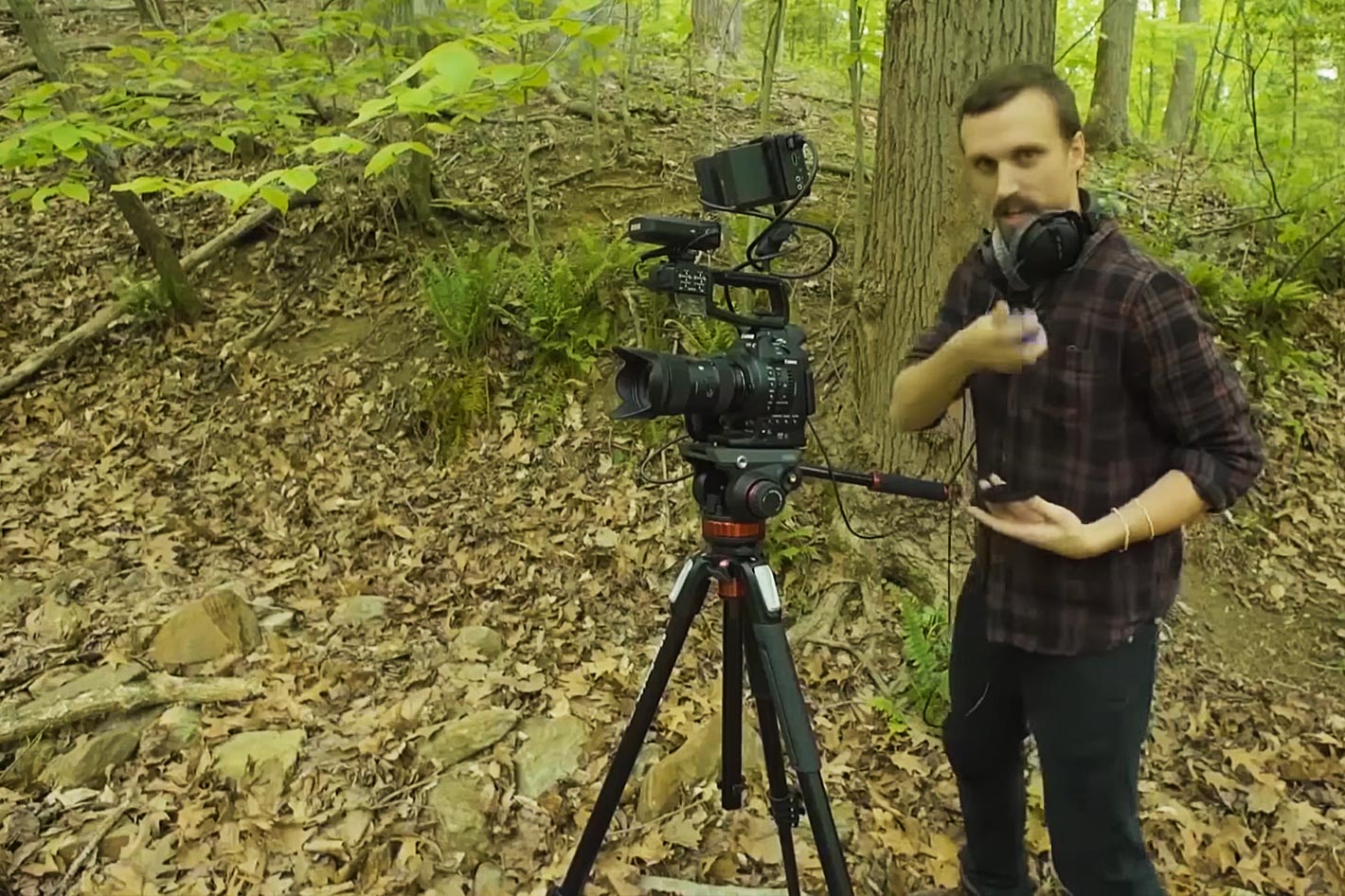
ProVideo Coalition: How long does it take to complete a documentary, from the moment you make the first contacts to flying to locations, filming, back to the editing table and releasing a project?
Danny O’Dwyer: It depends so much on the project. Some projects come together in weeks, and some take years from first email to stepping through the door. In terms of filming our standard on-location studio project we generally film for between 2-5 days, and can interview anywhere between 5-20 people. Editing obviously depends a lot on how much tape we have to go through. Generally pulling selects and building the general template takes me two weeks, and from there I’ll usually take another 2-3 weeks to fine tune and release the edit. But sometimes we take a lot longer if the schedule permits it. We often have smaller 1-person videos that break up the big docs and they provide us a bit of headroom with the audience. Sometimes projects sit on our drives for a year before we edit them. It’s only the two of us so we really have to pick our battles.
Noclip is a team of two
ProVideo Coalition: We’re now living through a pandemic, so how has that affected the way you work?
Danny O’Dwyer: Yea I mentioned earlier that I don’t suspect media interviews to return any time soon – probably not in 2021. So we’re trying our best to make the remote interviews interesting by either doing more motion graphics work or supplementing the videos with stuff filmed locally. We also don’t have any of our usual studio b-roll to lean back on but the joy of making video game documentaries is that you essentially have one unlimited b-roll bin: the game itself. There is an infinite amount of footage you can pull from a game to illustrate what your subject is talking about so that’s a blessing. So in that respect we’re changing the scope and angle of our projects.
ProVideo Coalition: You’re usually just a team of two. How have you found a filmmaker that shares the same vision about gaming docs? How do you define what’s next in terms of work?
Danny O’Dwyer: I’m very lucky. We worked together at GameSpot and Jeremy has experience working on bone-fide documentaries for PBS and some well-respected filmmakers. I think we both enjoy the freedom of working on projects we’re interested in. The quick project turnaround also allows us to jump to and from different stories a lot which is a pleasure a lot of filmmakers don’t get to enjoy. For us it’s all about being interested in the work, while providing genuine human stories that our audience enjoys. The world of game design is bountiful with these types of stories, so we’re hoping to keep doing this work for years to come. As long as games keep getting made by talented people whose stories deserve to be heard, we’ll have no shortage of opportunities.

Filmtools
Filmmakers go-to destination for pre-production, production & post production equipment!
Shop Now